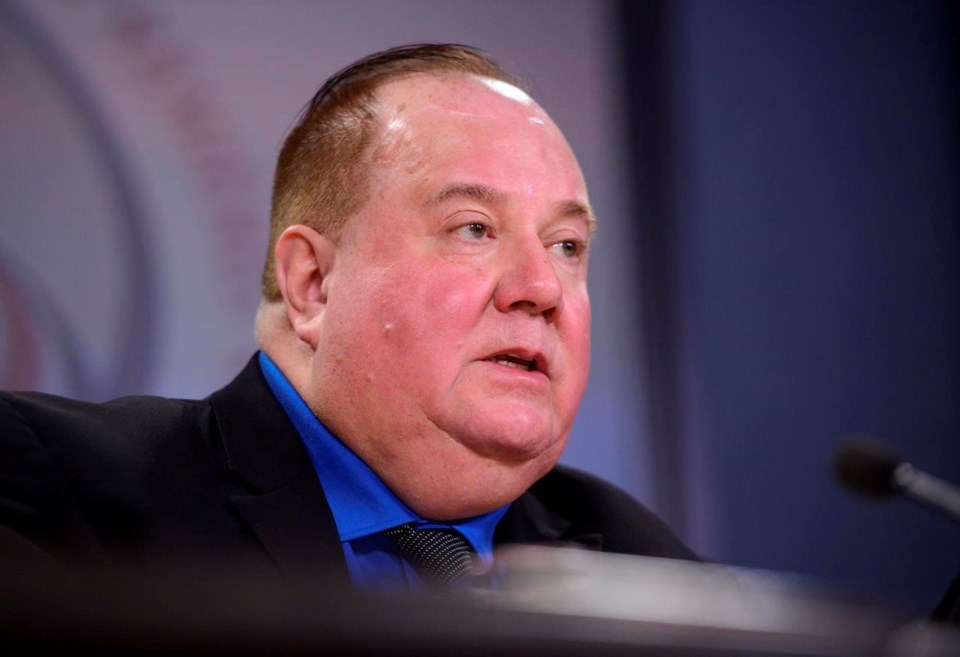The Mohawks of the Bay of Quinte have a long history of military service ranging from the First and Second World War to Afghanistan, but Chief Donald Maracle had always known many of the First Nation's veterans lay in unmarked graves in the community's cemeteries.
Maracle said that's because many Indigenous veterans who returned from war were not afforded the same benefits provided to other veterans, and their families often couldn't afford proper headstones commemorating their service to the Crown.
"What's important for Canadians to remember is that native people could not be conscripted into the military because they didn't have the right to vote during the First World War and Second World War, they were not seen to be British subjects," he said. "Native people volunteered in numbers disproportionate to our population."
But with some assistance from a Canada-wide organization working to identify Indigenous veterans lying in unmarked graves, eight Mohawk veterans from the Great Wars now have proper headstones marking their military service.Â
Maracle says the grave markers and respect are long overdue.
"Even though it is some decades later, it's better late than never," he said.
The grave markers are the product of a project led by the Last Post Fund, which launched its Indigenous Veterans' Initiative in 2019 as an effort to advance reconciliation by identifying and providing proper headstones for those lying in unmarked graves. Its other function is to provide traditional Indigenous names and cultural symbols to existing military grave markers.
Through the initiative, the organization has researched thousands of Indigenous veterans in Canada, found hundreds of their unmarked graves and provided more than 165 grave markers. But Last Post Fund's executive director Edouard Pahud said they've only scratched the surface of the issue and need First Nations to provide research, oral history and expertise on their own communities to ensure more are recognized.
"It means a lot to the families and to the communities where there is that strong relationship [with military service]. They are thrilled to see the proper recognition and commemoration," said Pahud, adding some Indigenous communities are not fully aware of their own history of members who have served.
"Indigenous veterans are as deserving as our regular veterans in terms of having a proper commemoration and proper military markers."
The Indigenous Veterans' Initiative is based on a list provided by Yann Castelnot, an amateur historian from France living in Quebec, who compiled one of the largest databases of Indigenous soldiers, including nearly 15,000 who were born in Canada.
Pahud said he never would have known many of the people on the list were Indigenous, noting several had French or religious names imposed on them during their time at residential schools or adopted new names in order to enlist in the Armed Forces.
Since many traditional military markers have specific regiments on them, the initiative's researchers went to Cree artist Jason Carter to design culturally relevant symbols, based on the Seven Sacred Teachings, that families can opt to have etched into the stones.
In order to confirm that an Indigenous veteran is in an unmarked grave, the initiative will typically reach out to an Indigenous community to gauge interest in helping conduct research. Maria Trujillo, the Last Post Fund's Indigenous program coordinator, said identifying veterans is highly dependent on research from and oral histories within First Nations communities.
"It's amazing when I mention the name of a veteran and people immediately connect them to the community," said Trujillo, adding oral histories become key when researchers can't confirm an Indigenous veteran's service records. "They know their people really well and it's helped with the research."
As a result of this collaboration with First Nations, the Last Post Fund's list of Indigenous veterans has grown through word-of-mouth, as communities help add names to veterans not on Castelnot's original list.
The initiative also tries to stir up interest by writing articles, taking out advertisements in newspapers and magazines — many of them Indigenous-focused — and attending Pow Wows. A documentary on the initiative in collaboration with Indigenous filmmakers is also in the works.
To date, the Last Post Fund has researched less than 25 per cent of the total names on their list of Indigenous veterans. Much of the research so far has focused on western provinces since the initiative's creation, and Pahud and Trujillo have opted to make Ontario a larger focus in the coming years, since Castelnot's list shows there are more than 5,000 Indigenous veterans in that province alone. So far, the initiative has researched less than 20 per cent of those veterans.Â
"A lot of people are surprised when I call into the community and they're like, 'I didn't even know this existed, I didn't know we had access to this,'" said Trujillo.
She said interest in the initiative has grown naturally over time, adding feedback from veterans' families and First Nations communities leave her optimistic that more will hop on board by supporting its research.
"I really think if more people know about us, we're going to get more families contacting us directly."
This report by The Canadian Press was first published Nov. 10, 2022.
—â¶Ä”â¶Ä”
This story was produced with the financial assistance of the Meta and Canadian Press News Fellowship.
Tyler Griffin, The Canadian Press



